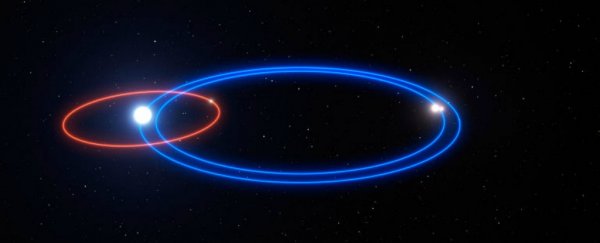Editor's note: This paper was later retracted. Further details here. Original story appears below:
We often find star systems that have pretty weird house rules, those that have gigantic planets or those that have more than one sun. As is the case of this latest find - a star system that has three stars.
A team of astronomers from the University of Arizona discovered a watery exoplanet caught between three separate suns that wanders through the cosmos 320 light-years away from our Solar System.
Using ground-based telescopes based in the arid Atacama Desert in Chile, the astronomers were trying to find planets with incredibly vast orbits. Surprisingly, this odd system popped up first.
The study, published in Science, named the planet HD 131399Ab. Found near the Scorpius constellation and the bright star Antares, the planet has an orbit of 550 Earth years. It is directly in orbit around a star twice the size of the Sun.
The planet and the star also share the system with two stars twirling around each other. One of them is around the size of our Sun, and the other is half. They make a complete rotation every 35,000 Earth years.
The planet, four times the size of Jupiter, was scanned using near-infrared spectroscopy. This determined the presence of significant quantities of water and methane.
While being one of the coldest planets directly detected, it is still at a searing 500 plus degrees Celsius (1,000 degrees Fahrenheit), preventing water to stay in liquid form (so obviously no Earth-like life will be found here)
Origin story
Because it was just recently detected, no credible origin story has been confirmed for this unique planet. But there are hypotheses.
 ESO
ESO
One idea is that the planet formed much closer to the star it orbits but was pulled out by other forces.
The second idea is that the star it orbits formed around one of the nearby twin stars and was likewise flung out somehow and caught in a new orbit.
Lastly, the scientists say the stars could have even formed while the stars were still getting into their current position, and it was shoved out during the stellar shuffling.
This article was originally published by Futurism. Read the original.
